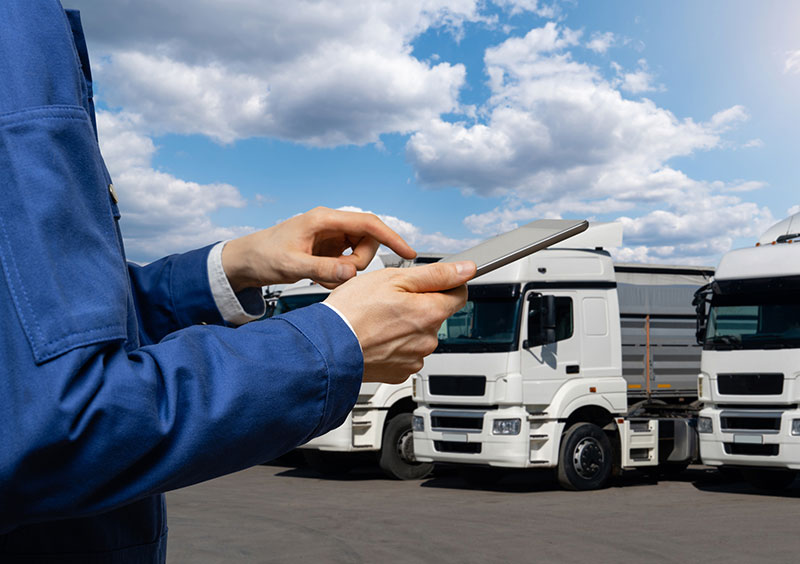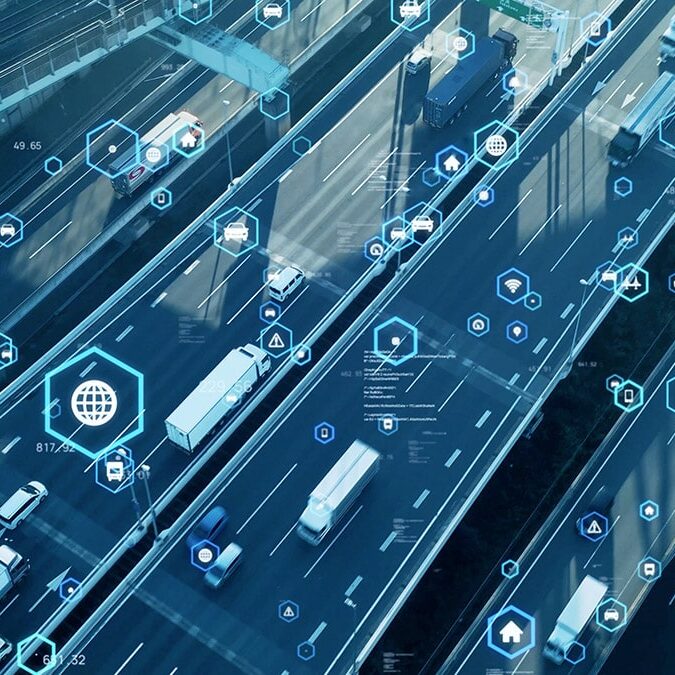The Role of IoT Telematics in Commercial Fleet Insurance
By Greg Oppenheim
March 28, 2024
By Greg Oppenheim
March 28, 2024
The insurance industry has experienced long-term stability. However, recent trends are shaking things up, especially for commercial fleet management.
Demand for operational efficiency and increased road safety is rising. In addition, there is a strong emphasis on improving profitability. As a result, fleet service providers are adopting Internet of Things (IoT) technologies to enhance their business health.

One of these technologies is telematics. It was used in the personal insurance sector, but it has been gaining traction in commercial use. Telematics is transforming how providers interact with vehicles and manage fleets. It can generate more accurate data about vehicle usage and driving behavior that impacts insurance rates and claims.
In a recent report by Risk Insurance, telematics and IoT crash avoidance technologies help predict and prevent accidents. VisionTrack reported that telematics reduced risky driver behavior by 80% and at-fault collisions by 40%. Amerisure Insurance typically sees a 30% decrease in claim frequency and severity for fleets.

Telematics technology tracks vehicle health and driving patterns. To capture data for transmission to a fleet monitoring application, an IoT telematics solution will deploy devices such as:
The wireless connectivity data plan determines how reliably devices communicate and transmit telematics data between vehicles and fleet managers. Speed, distance and driver performance (e.g., braking) are monitored and collected in real time.
Insurance providers are under constant pressure to improve the profitability of their policies. If the loss ratio is above 100%, the insurance company is paying more in claims than it is receiving in premiums. With telematics, insurance carriers can more accurately assess risk to customize policies and set rates.
Other risk factors that commercial insurance companies evaluate include:
Past accidents, driving behaviors and even traffic violations affect risk and rates.
Commercial drivers with special training may be viewed more favorably.
Heavier vehicles (e.g., trucks or buses) may pose bigger risks than smaller passenger vehicles.
Well-maintained fleet vehicles are less likely to experience mechanical failures leading to potential accidents.
Commercial vehicle insurance companies consider a combination of factors when evaluating risk. Telematics provides more accurate data. This information allows carriers to set rates and process claims based on actual risks to protect the insurer and policyholder.
Insurance is part of a fleet owner’s operating expense. Risk assessment data helps fleet owners monitor their fleet and drivers to optimize spending. Fleet owners want to know when and how the vehicles are used, from fuel efficiency to maintenance. They also want to equip drivers with better driving habits.
As a result, insurance companies are inviting their commercial policyholders into driver safety training programs. There is no better way than to educate customers on becoming better drivers. In addition, fleet owners expect a discount when sharing the data with insurance providers.

Cellular-enabled fleet telematics optimizes operations and enhances customer experience for commercial insurance and companies that manage fleets. A flexible, reliable connectivity data plan is vital to adapt to providers’ needs. Real-time data can be used to improve operations and reduce expenses.
Telematics integrates dynamic mapping with real-time traffic information like weather updates and traffic patterns. Fleet managers can track fuel consumption and costs. Using this data, they can select the best routes under any conditions, leading to greater productivity and safety.
Every business has valuable assets, from industrial equipment to vehicle fleets, that must be protected. Real-time asset tracking leverages sensors and connected devices to track your assets remotely. With IoT connectivity over multiple cellular networks, fleet managers can quickly locate and identify lost or stolen items.
Vehicle sensors deliver detailed information and real-time alerts about a vehicle’s health. They can even monitor event alerts before malfunctions occur. In the case of an accident, telematics helps insurers to assess damages and process claims quickly and more accurately.
Fleet telematics plays a critical role in fleet operations and management. It can directly affect insurance premiums as data is shared. Telematics can help companies reduce expenses while enabling safer driving.

One of the biggest insurance industry disruptors is AI and automation. Majesco launched the world’s first generative AI insurance platform.
Many digital insurance companies use chatbots. AI takes it a step beyond creating a quote. AI “agents” can look up the data and edit policies and claims while making information easier for the user to understand.
Another crucial advancement is automating underwriting and pricing. Insurers can analyze everything from text-based reports to loss runs. They also generate risk assessments for more accurate premiums in near real time.
Insurance will transition from a “detect and repair” to a “predict and prevent” model.
Advanced IoT technologies will:
Insurance carriers and fleet owners must integrate new skills and technologies and partner with other experts to thrive.
As an IoT solutions provider, Telit Cinterion understands the problems that commercial fleet owners face. With our security-by-design approach, we can build your ready-to-launch telematics solution with our cellular modules, connectivity plans and services, and platforms.
We support fleet management companies with our end-to-end custom solutions to make operations more profitable and improve driver safety. At the same time, we recognize that commercial fleet insurance companies must assess risks accurately and transmit data safely.
Speak to our telematics experts to start developing your scalable, future-proof telematics solution.